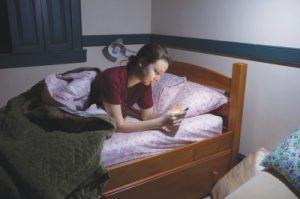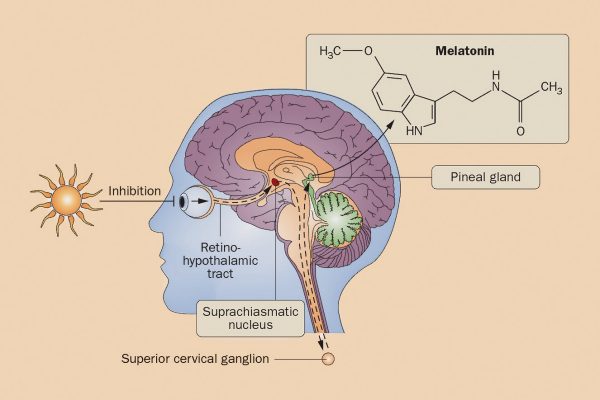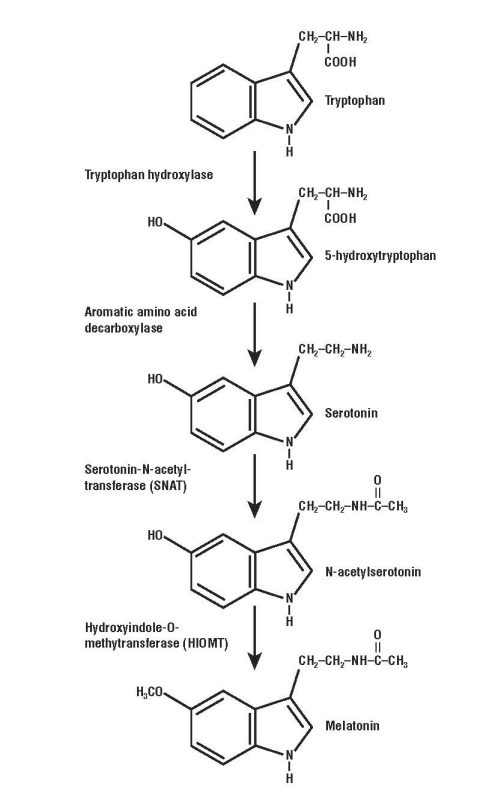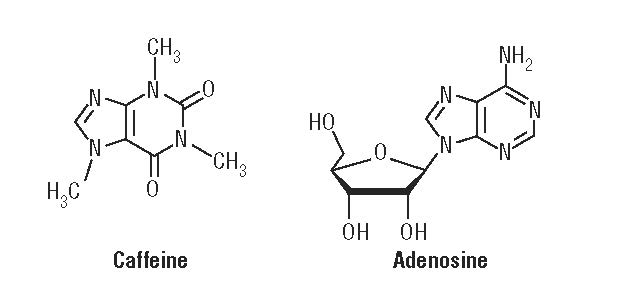The Science of Sleep

When the Columbia, Mo., school board announced they were considering moving Rock Bridge High School’s start time from 7:50 a.m. to 7:20 a.m., it was the last straw for sophomore Jilly Dos Santos. “I thought if that happens, I will die. I will drop out of school!” she said.
Jilly set up a Facebook page and a Twitter account to encourage her fellow students to show up at the school board meeting where the vote was taking place. With their help, she made hundreds of posters and flyers. Then, armed with a mountain of scientific research she and her friends had collected, she stood before the board and made the case against an earlier start time. It worked.
The school board abandoned the idea of beginning the day at 7:20 a.m. Jilly was not through, though. The next day, she started campaigning for an even later start time, and her persistence paid off. Eventually, the board voted 6 to 1 to ring the first bell more than an hour later, at 9 a.m.
Why do teenagers find it so hard to wake up early, and why are more and more school districts opting for later high school start times? It turns out the answer can be found in the chemistry of sleep.
Our Internal Clocks
Our bodies release chemicals in a 24-hour cycle, nudging us to do certain activities at certain times. Each of these cycles is called a circadian rhythm (see “Circadian Rhythms and Life,” p. 10). One of the most important chemicals involved in this process is melatonin, a hormone that makes us feel drowsy. The amount of melatonin in our bodies starts increasing in the evening and peaks in the middle of the night, letting us know it is time to sleep. It then decreases by morning, allowing us to wake up refreshed.
Circadian Rhythms and Life
Circadian rhythms are not unique to humans—they are also found in plants, animals, fungi, and even bacteria. External signals, such as light, trigger the cyclical release of chemicals that signal when to start and stop different actions. Circadian rhythms govern all types of activities: feeding times in bees, leaf movement in plants, and DNA replication in fungus, among others. In humans, circadian rhythms are best known for governing our sleep schedules.
To maintain our 24-hour sleep schedule, our bodies translate information about time of day into melatonin production. This process starts in the eye’s retina. When the retina is exposed to light, a signal is relayed from the retina to an area of the brain, called the suprachiasmatic nucleus, which plays a role in making us feel sleepy or wide awake.
The suprachiasmatic nucleus sends signals to other parts of the brain that control hormones and body temperature. Then, signals travel from the brain down the spinal cord and back up to the pineal gland, a small pinecone-shaped organ in the brain where melatonin production takes place. During the day, such signals prevent the pineal gland from producing melatonin. But when it is dark outside, these signals are not activated, and the pineal gland is able to produce melatonin (Fig. 1). In other words, exposure to light prevents melatonin release, which keeps us awake, and lack of exposure to light causes melatonin release, which tells us to “go to sleep!”
These brain signals explain how our bodies know when to produce melatonin, but how is melatonin synthesized? Melatonin is actually derived from an amino acid called tryptophan, which is absorbed from the bloodstream to the pineal gland. An amino acid is an organic acid used to make proteins.
The synthesis of melatonin from tryptophan occurs through a multistep process (Fig. 2). First, tryptophan is converted to another amino acid, 5-hydroxytryptophan, through the action of the enzyme tryptophan hydroxylase and then to a brain chemical called serotonin by an enzyme called aromatic amino acid decarboxylase. An enzyme is a biological catalyst that speeds up the rate of a chemical reaction.
Serotonin's conversion to melatonin involves two enzymes: serotonin-N-acetyltransferase (SNAT), which converts the serotonin to N-acetylserotonin with the addition of an acetyl group (COCH3), and hydroxyindole-O-methyltransferase (HIOMT), which transfers a methyl group (CH3) to the N-acetylserotonin. The activities of both enzymes rise soon after the onset of darkness.
The amount of melatonin produced depends on the activity of SNAT, which peaks when it is dark outside. Exposure to light induces signals that, as explained earlier, travel from the retina to the suprachiasmatic nucleus and then to the pineal gland, resulting in the degradation of SNAT. However, at night, SNAT is phosphorylated. Phosphorylation, which is simply the addition of a phosphate group (PO43−) to a protein or other organic molecule, prevents SNAT from being degraded and thus increases melatonin production.
When it is morning time, SNAT is degraded again, the amount of melatonin decreases, and you feel ready to start the day.
Teens and Melatonin
As we have learned more about the chemistry of sleep in the past few decades, we have come to realize that it really is harder for teens, such as Jilly, to wake up early. In teens, melatonin is produced about three hours later in the 24-hour sleep cycle than in children or adults. This keeps them up late, and when they wake up early, SNAT is still active and they are still producing melatonin, which leaves them feeling sleepy in the morning.
Teenagers typically require nine hours of sleep per night. But because of their late bedtimes and schools’ early start times, they average only seven hours of sleep per night. Because they haven’t slept long enough, they feel perpetually drowsy, which affects their ability to pay attention in classes and to learn.
What happens when a high school, such as Jilly’s, starts later? So far, schools have reported big gains. For example, the Minneapolis Public School District shifted its start time from 7:15 a.m. to 8:40 a.m. It found that students averaged more than five extra hours of sleep each week, and attendance and enrollment rates improved as well. Also, daytime alertness increased, and rates of depression decreased.
Even more surprising is the number of car crashes involving teenagers in Fayette County, Kentucky, decreased by almost 17% in the two years following its adoption of a later start time for school. So, it appears that taking into consideration a shift in the timing of melatonin production in teens can have all sorts of benefits.
Many teenagers are not lucky enough to attend a school with a later start time, however. In the 2011–2012 academic year, about 40% of U.S. high schools were still starting before 8 a.m. So what can you do if you are in this group? First, minimize exposure to artificial light at night. This includes light from TV, computers, and phones. By signaling to your body that it is daytime, these light sources facilitate the degradation of SNAT and interfere with the production of melatonin. This means you won’t feel drowsy, making it difficult to go to sleep at a reasonable time.
Another way to get more sleep is to avoid sleeping in too late on weekends. It may seem counterintuitive because if you are not getting enough sleep during the week, your body will urge you to stay in bed on weekend mornings to make up for your lost sleep. But the reality is that sleeping in on weekends can confuse your body’s biological clock, making it even tougher to wake up on weekdays.
A Balancing Act
Jilly was able to use her knowledge of chemistry to convince her school district to move to a later start time. The logistics of this kind of shift can be tough, though, which prevents many school districts from adopting this solution. Because most districts have a limited number of school buses to transport students, if high schools start later, elementary and middle schools may need to start earlier. Often, parents of younger kids do not like this idea. After all, most people don’t like to wake up earlier than they have to!
Also, some high school students involved in after-school activities dislike having to stay at school until dark. Clearly, balancing the biological sleep schedule of teenagers with the demands of society is difficult, but more and more districts are interested in trying to make later start times work.
This is a perfect example of how our understanding of chemistry—in this case, a three-hour shift in melatonin production in teens—can translate into a change that improves teens’ lives.
Selected references
J. Hoffman. To Keep Teenagers Alert, Schools Let them Sleep In. The New York Times, March 13, 2014: http://well.blogs.nytimes.com/2014/03/13/to-keep-teenagers-alert-schools-let-them-sleep-in/?_php=true&_type=blogs&_php=true&_type=blogs&_r=1& [accessed Sept 2014].
School Start Time and Sleep, National Sleep Foundation: http://sleepfoundation.org/sleep-news/school-start-time-and-sleep/ [accessed Sept 2014].
Pannoni, A. Later High School Start Times a Challenge for Districts. US News and World Report, March 24, 2014: http://www.usnews.com/education/blogs/high-school-notes/2014/03/24/later-high-school-start-times-a-challenge-for-districts [accessed Sept 2014].
Kristin Harper is a science writer who lives in Seattle, Wash. Her latest ChemMatters article, “Skin Color: A Question of Chemistry,” appeared in the April/May 2014 issue.
Why Does Caffeine Wake You Up?
Melatonin is not the only chemical that determines our sleep schedule. Adenosine also plays an important role: it slows down the activity of neurons. It gradually builds up in our bodies when we are awake and makes us feel sleepy by the end of the day. Then, when we sleep, adenosine molecules break down, so the cycle can start all over again. Our neurons, or nerve cells, are embedded with adenosine receptors. When adenosine binds to these receptors, a variety of proteins that inhibit neurons are released. This suppression of nerve cell activity is what causes the feeling of drowsiness.
Caffeine has a chemical structure similar to that of adenosine (Fig. 1). Both molecules have a double-ring structure, which allows caffeine to bind to adenosine receptors. Unlike adenosine, however, caffeine does not activate these receptors or suppress neuron activity. By reducing the concentration of available adenosine receptors, caffeine slows the rate of reaction: Less-bound adenosine means we feel less sleepy.
A little caffeine can be a good thing. It can temporarily improve memory, decrease fatigue, and improve mental functioning. But too much caffeine can cause negative side effects, such as insomnia, tremors, nausea, chest pain, and heart palpitations. In fact, over a three-year period, the Illinois Poison Center in Chicago counted more than 250 cases of medical complications that involved caffeine, 12% of which ended in hospitalization. The average age of the patients was 21, suggesting that young people are particularly prone to overindulging in caffeine. So be careful not to overdo it!
—Kristin Harper





